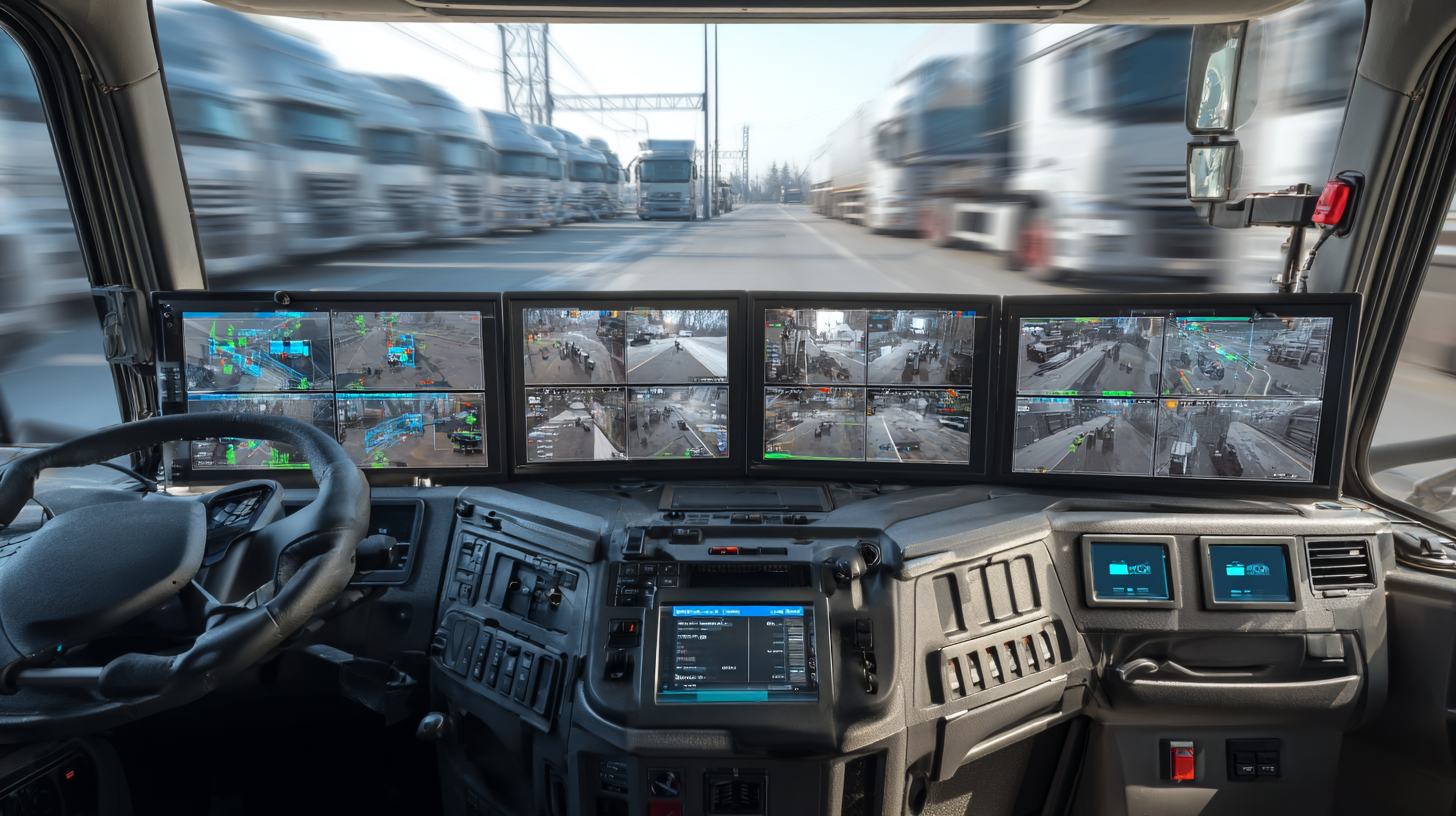In the rapidly evolving transportation sector, fleet safety has emerged as a paramount concern for businesses striving to minimize risks and operational costs. A comprehensive report from the National Highway Traffic Safety Administration (NHTSA) reveals that implementing advanced technologies such as Fleet Camera Solutions can significantly reduce accidents by up to 30%, ultimately saving firms countless dollars in litigation and insurance. As the global fleet management market is projected to reach over $34 billion by 2025, the demand for innovative fleet camera systems is surging, driving manufacturers to enhance their product offerings. These solutions not only provide real-time monitoring and evidence collection but also promote safer driving behavior through advanced analytics. As we delve into the future of Fleet Camera Solutions, it’s crucial to explore their advantages, including superior after-sales service and reduced maintenance costs, which can further bolster safety initiatives across fleets worldwide.

Emerging trends in fleet camera technologies are poised to revolutionize the way safety is managed in transport and logistics. According to a recent report from the American Transportation Research Institute, incorporating advanced camera systems can reduce road incidents by up to 50%. This significant decline is largely attributed to features such as real-time video streaming and AI-driven analytics that enhance situational awareness for fleet operators and drivers alike.
Moreover, the shift towards integrated safety solutions is becoming increasingly apparent. Fleet telematics systems are now incorporating dash cams that offer not only accident recording capabilities but also driver behavior monitoring. A study by Frost & Sullivan reveals that fleets utilizing these integrated systems experience a 30% reduction in reckless driving incidents. With the rise of artificial intelligence and machine learning, future fleet camera solutions will likely include predictive analytics to anticipate potential hazards before they occur, creating a safer driving environment and ultimately leading to lower insurance premiums for fleet operators.

As fleet operators increasingly recognize the essential role of camera solutions in enhancing safety and efficiency, choosing the right system becomes paramount. One critical feature to consider is video quality. According to a report from the National Safety Council, high-definition (HD) video can improve incident analysis accuracy by 25%, helping fleets respond quickly and effectively to on-road incidents. Look for solutions that offer at least 1080p resolution and night vision capabilities to ensure clear footage in various conditions.
Another vital aspect is the integration of artificial intelligence (AI) for real-time data analysis. A study by the American Transportation Research Institute highlights that fleets utilizing AI-powered dash cams have reduced accident-related claims by up to 30%. This technology not only helps in identifying risky behavior but also provides coaches with actionable insights to improve driver performance. Moreover, consider solutions that offer cloud storage, as this will enable easy access to footage and facilitate better communication among teams.
Investing in these advanced features will undoubtedly drive innovations in fleet safety and operational effectiveness.
Fleet safety is evolving rapidly, with leading fleet camera systems emerging as essential tools for businesses. According to a recent report by the National Highway Traffic Safety Administration, cameras can reduce accident-related costs by up to 25%, highlighting their value in enhancing fleet operations. Notably, systems that incorporate AI and advanced analytics offer real-time insights that can significantly improve driver behavior and decision-making. For instance, platforms like Lytx and SmartDrive optimize safety protocols by providing actionable feedback based on video data, which can lead to measurable reductions in risky driving behaviors.
**Tips for Choosing a Fleet Camera System:**
Consider systems that offer both forward-facing and rear-facing cameras to capture comprehensive driving footage. Additionally, look for solutions with cloud storage capabilities to ensure easy access to data and seamless integration into existing fleet management software.
When evaluating different fleets' camera systems, it’s crucial to assess the ease of installation and user-friendliness of the interface. Research indicates that fleets reporting high satisfaction with their camera systems often cite these features as key factors in their selection process. Advanced systems also provide features such as collision detection and lane departure warnings, vital for enhancing overall safety and reducing liability.
This chart illustrates a comparative analysis of key features of leading fleet camera systems. The dimensions include Camera Resolution (in pixels), Night Vision Quality (in a scale of 1 to 10), Field of View (in degrees), AI Features (number of features), and Price in USD. These metrics are essential for evaluating the efficacy and reliability of different fleet camera solutions in enhancing fleet safety.
Investing in fleet camera solutions has become increasingly vital for organizations aiming to enhance safety and operational efficiency. According to a recent industry report, organizations utilizing advanced fleet camera systems have seen a reduction in liability claims by up to 30%, demonstrating a clear correlation between investment in technology and improved safety outcomes. These systems provide real-time visibility and comprehensive data analysis, enabling fleet managers to make informed decisions that can significantly mitigate risks on the road.

Moreover, budget-conscious decision-makers should examine the cost-effectiveness of these solutions. The same report indicates that while the initial investment in fleet camera technology may be substantial, the long-term savings in insurance premiums and accident-related costs can exceed the upfront expenditure by an impressive margin—up to 300% over a five-year period. As aerospace and defense sectors are increasingly leveraging advanced test and measurement equipment to enhance legacy systems, similar shifts towards high-tech safety solutions in the transportation industry are imperative. By prioritizing fleet camera systems, companies not only boost their safety protocols but also position themselves for sustainable growth in a competitive market.
As the trucking industry continues to evolve, the integration of advanced analytics into fleet camera solutions is revolutionizing fleet safety. These sophisticated systems leverage vast amounts of data collected from vehicle cameras, allowing fleet operators to gain real-time insights into driver behavior and road conditions. By analyzing footage and correlated driver data, companies can identify patterns that contribute to risky behaviors, ultimately leading to enhanced safety protocols tailored to their specific fleets.
The impact of these advanced analytics extends beyond immediate safety improvements; they pave the way for predictive maintenance and operational efficiencies. Through the analysis of past incidents and performance metrics, fleets can anticipate maintenance needs before a problem arises, minimizing downtime and reducing repair costs. Moreover, the actionable insights derived from data allow fleet managers to implement targeted training programs for drivers, improving overall performance and safety awareness. As technology continues to progress, the future of fleet camera solutions looks promising, with enhanced analytics driving the next generation of safety innovations that protect both drivers and assets on the road.
| Metric | Current Value | Projected Value (2025) | Impact of Advanced Analytics |
|---|---|---|---|
| Camera Resolution | 1080p | 4K | Improved clarity and identification of incidents |
| Incident Detection Rate | 70% | 90% | Real-time analytics enhance detection capabilities |
| Response Time to Incidents | 5 minutes | 2 minutes | Analytics facilitate quicker decision-making |
| Reduction in Accident Rates | 15% | 35% | Enhanced safety protocols supported by data insights |
| Fleet Efficiency | 85 miles/gallon | 95 miles/gallon | Data analytics help optimize routes and reduce costs |